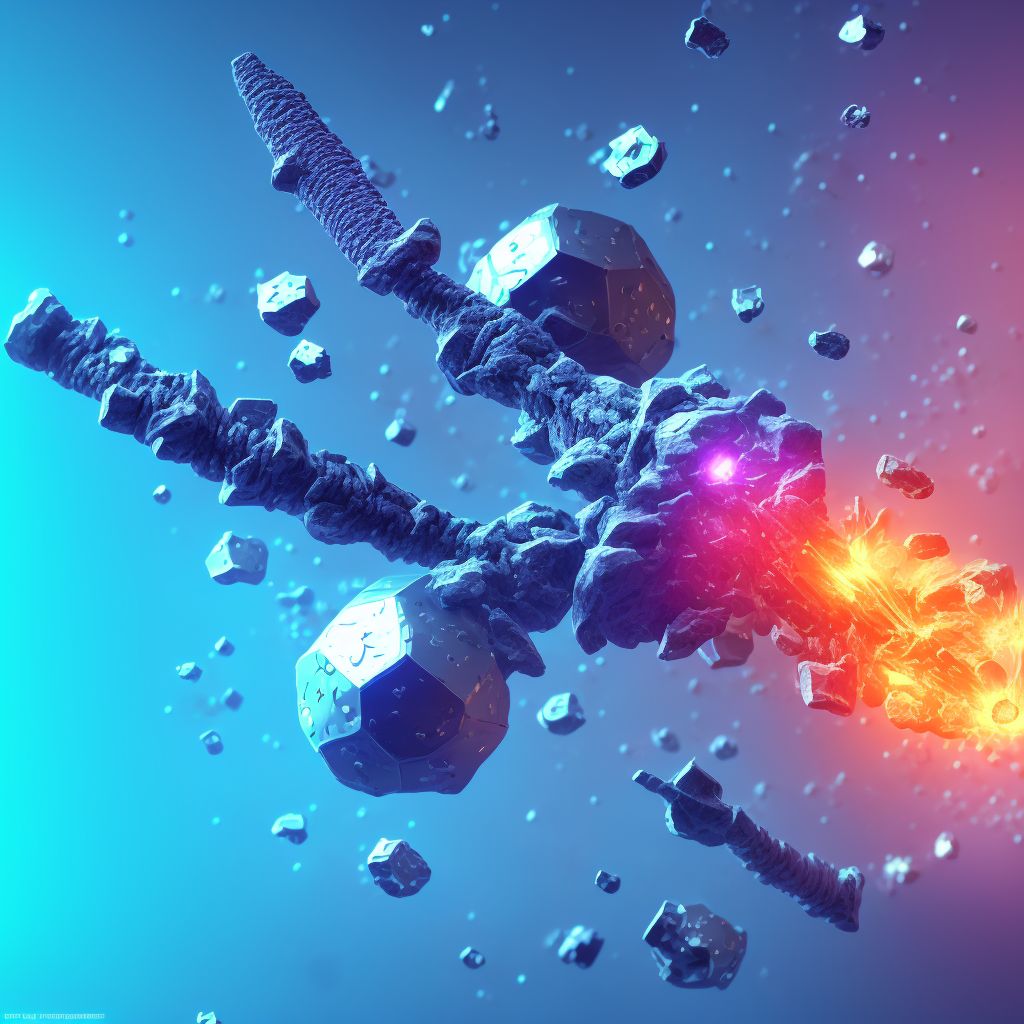
Nondisplaced comminuted fracture of shaft of left tibia, subsequent encounter for open fracture type IIIA, IIIB, or IIIC with delayed healing Save
ICD-10 code: S82.255J
Disease category: S82.255: Nondisplaced comminuted fracture of shaft of left tibia
Nondisplaced Comminuted Fracture of Shaft of Left Tibia: Understanding Delayed Healing
A nondisplaced comminuted fracture of the shaft of the left tibia, subsequent encounter for an open fracture type IIIA, IIIB, or IIIC with delayed healing, is a complex injury that requires careful management and attention. This condition refers to a fracture in the leg bone that has not shifted out of its normal position and involves multiple broken fragments. Delayed healing indicates that the fracture site has not healed within the expected timeframe.
When dealing with this type of fracture, it is crucial to understand the factors that contribute to delayed healing. Several factors can affect the healing process, such as the severity of the fracture, the patient's age, overall health, and lifestyle choices. A comprehensive assessment is essential to determine the underlying causes and develop an appropriate treatment plan.
Fractures of the tibia can be classified using the Gustilo-Anderson classification system, which categorizes open fractures based on their severity. Type IIIA, IIIB, or IIIC open fractures are severe injuries that involve varying degrees of soft tissue damage, infection risk, and bone loss. These factors can further complicate the healing process and require specialized care to achieve optimal outcomes.
To manage a nondisplaced comminuted fracture of the shaft of the left tibia with delayed healing, a multi-disciplinary approach is often necessary. Orthopedic surgeons, physical therapists, and other healthcare professionals work together to develop a comprehensive treatment plan that addresses the specific needs of the patient.
- Immobilization: Stabilizing the fracture site with a cast or brace helps prevent further damage and promotes healing.
- Pain management: Medications and physical therapy techniques can help alleviate pain and discomfort associated with the fracture.
- Weight-bearing restrictions: Limiting weight-bearing activities allows the fracture site to heal without excessive stress.
- Regular follow-ups: Monitoring the progress of the fracture through regular check-ups and imaging studies is crucial to ensure proper healing.
It is important to note that each case of a nondisplaced comminuted fracture of the shaft of the left tibia with delayed healing is unique. Treatment plans may vary depending on the individual circumstances and the patient's response to therapy. Therefore, it is essential to consult with a healthcare professional for personalized advice and guidance.
Overall, understanding the nature of this injury, the factors that contribute to delayed healing, and the appropriate management strategies is vital for promoting successful outcomes in patients with a nondisplaced comminuted fracture of the shaft of the left tibia.
Treatment of Nondisplaced comminuted fracture of shaft of left tibia, subsequent encounter for open fracture type IIIA, IIIB, or IIIC with delayed healing:
Treatment Options for Nondisplaced Comminuted Fracture of Shaft of Left Tibia with Delayed Healing
When it comes to the treatment of a nondisplaced comminuted fracture of the shaft of the left tibia, subsequent encounter for open fracture type IIIA, IIIB, or IIIC with delayed healing, there are several options available. These treatment methods aim to promote healing, alleviate pai...
To see full information about treatment please Sign up or Log in